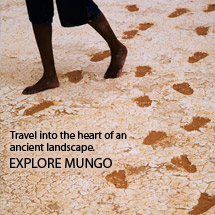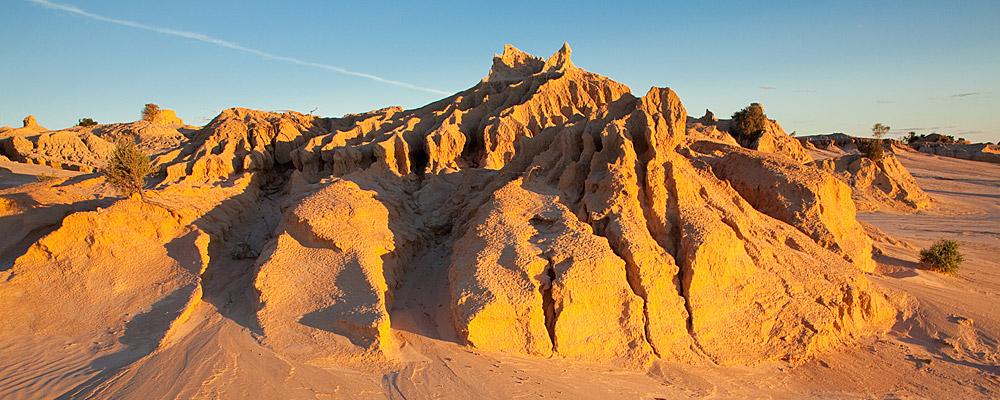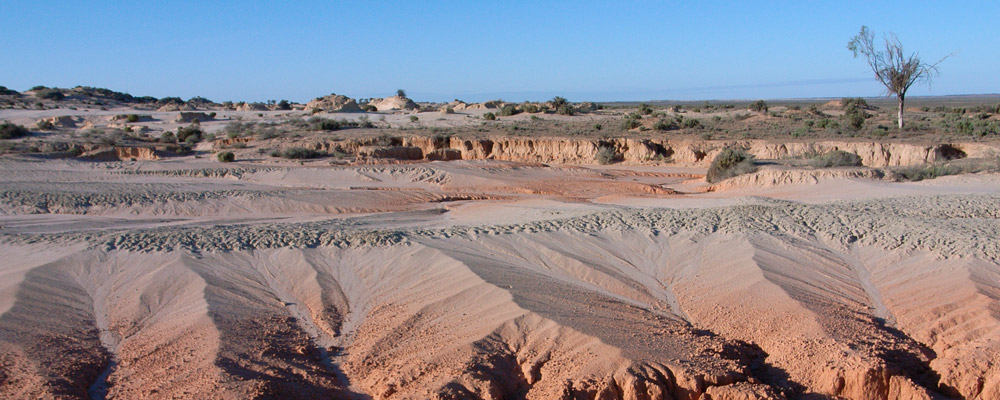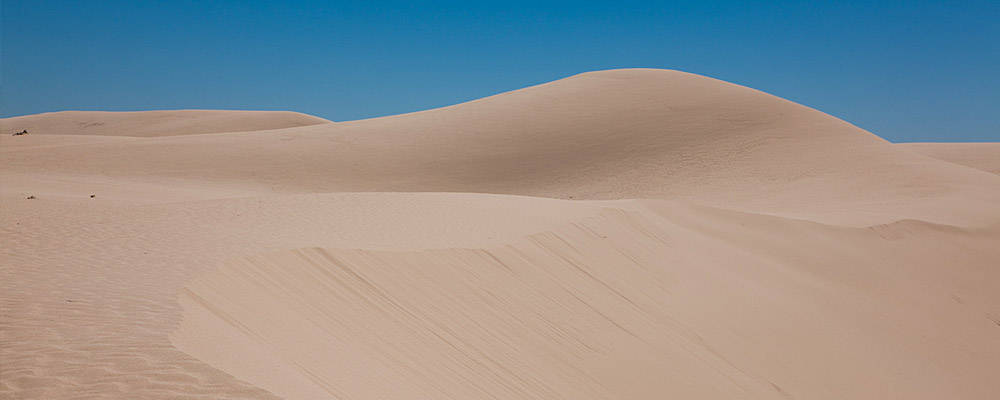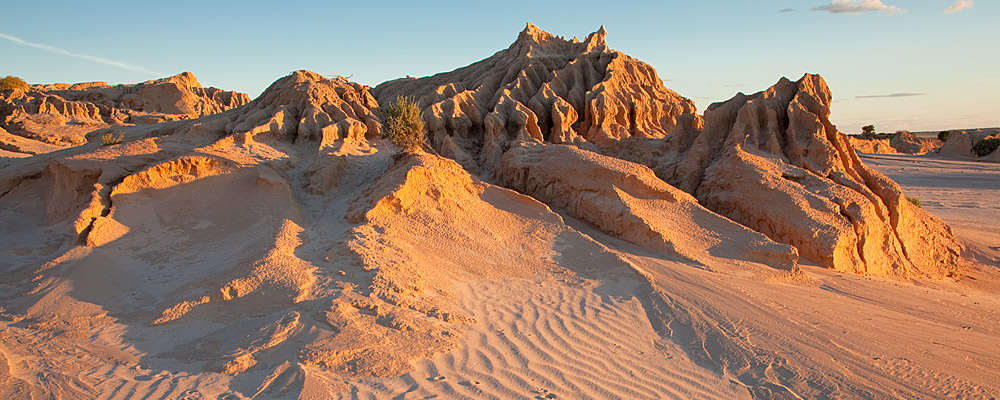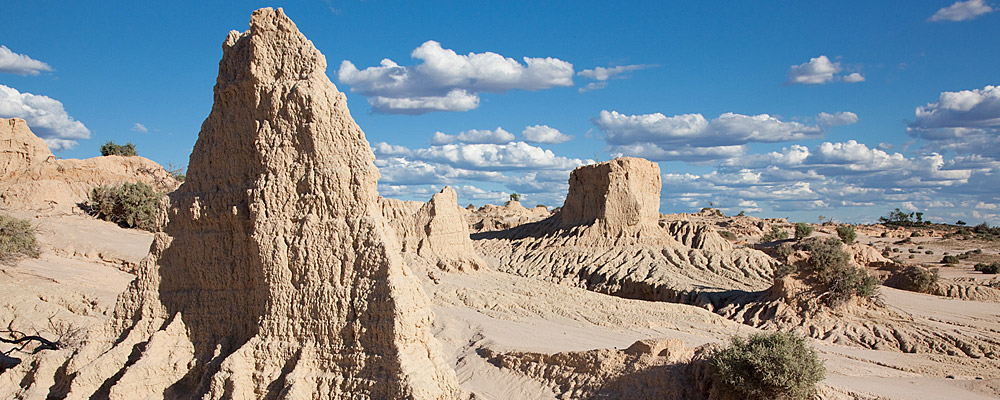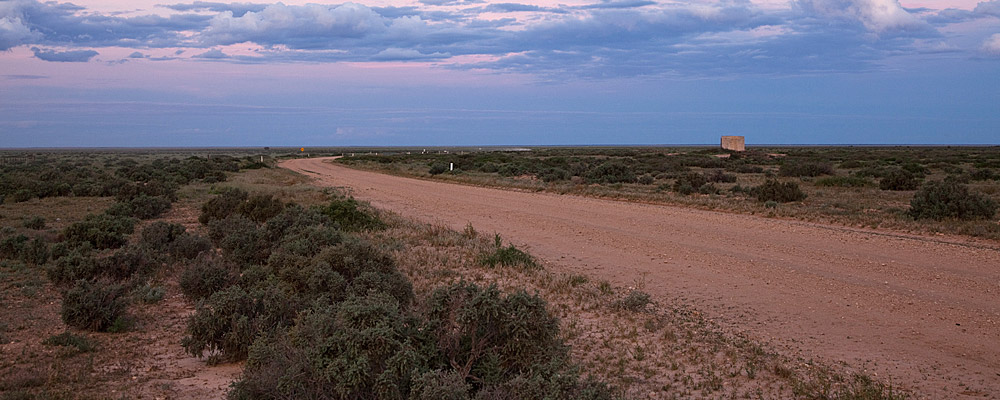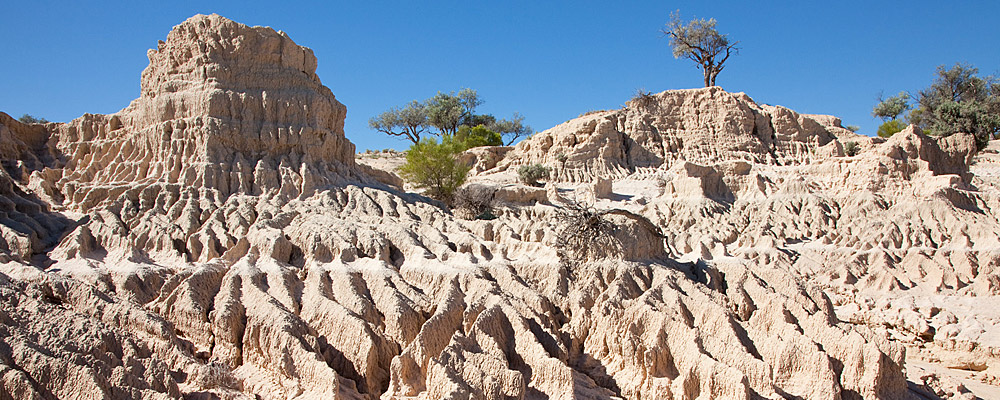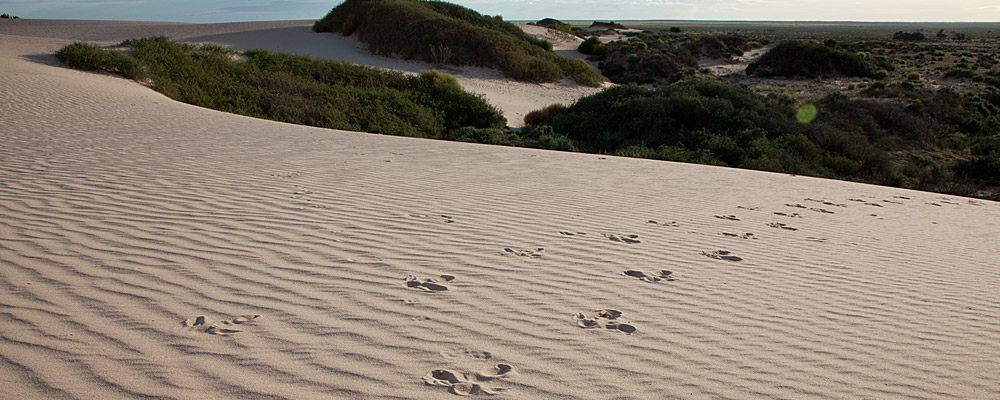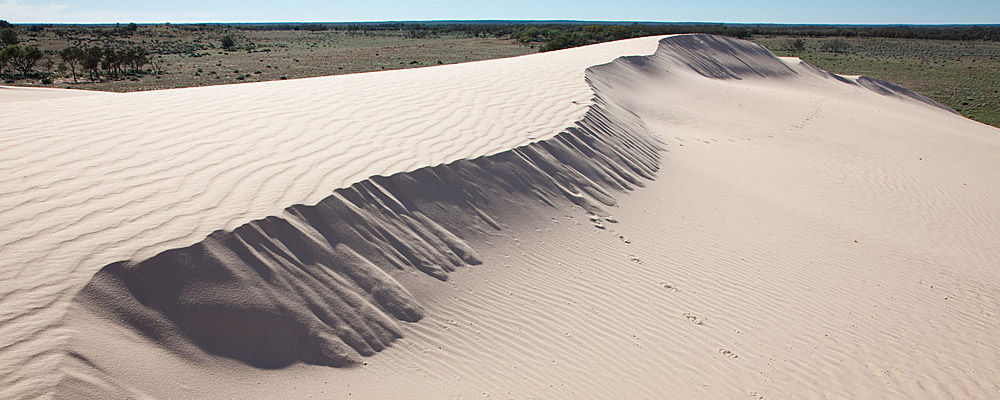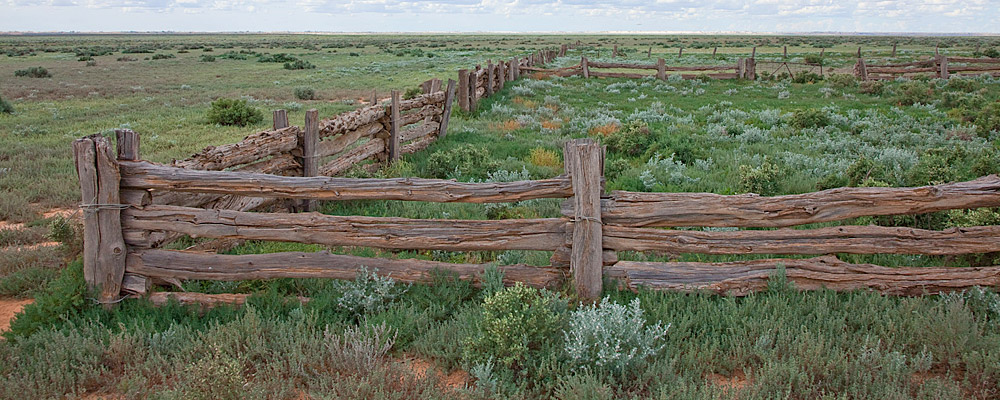Share Mungo Culture
Ancient Footprints
When were the footprints made?
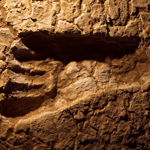
The footprints were pressed into the soft floor of a damp claypan beside a small basin some 20,000 years ago, during the Pleistocene era. At that time the last glacial maximum was in full flight. The climate around Willandra Lakes was dry, cold and windy. Sand dunes were blowing in from the west, and the lakes were steadily drying out - first in the south then moving northwards. The wider landscape was becoming increasingly barren, so people were probably following the drying lakes north for the shellfish and other food they offered. Animals too would have been attracted to the lakes and nearby soaks.
Who made the footprints and what were they doing?
It was on one of those cool Pleistocene days that a group of several adults, adolescents and a few children, perhaps a family group, walked across the claypan heading east. The tracks include that of a young child, with a foot about 15 cm long, who meandered back in the opposite direction to the main group. Was the child called back, or just playing about as children do?
The footprints and stride lengths show how the child walked, paused, turned and ran away from the group they were with, before walking briskly back towards them. Perhaps the child was called back by an adult or older sibling. So seldom in open-site archaeology do we see such a personal and familiar signature.
Harvey Johnston and Michael Westaway, Archaeologists
A day or two after the first group, another group, probably men, crossed the claypan. They were moving very fast. The Pintubi trackers not only reckon the men were running together after prey, but they also spotted where a thrown spear missed and skidded into the ground.
Most remarkable of all was a single line of right footprints, pushed heavily into the clay. There is no corresponding left footprints. The Pintubi were sure this was a one-legged man, hopping very fast along with the other hunters. Such prowess suggests that the man was well practised in hopping, rather than perhaps having a temporary injury. He may have been using a stick. Did this man lose his leg in a fight with man or beast? Did the ancient Willandra people carry out amputations? We may never know the answers to questions like these, or understand this man's story.
What were these people like?
Another line of investigation was biomechanical analysis of the footprints. This has shown that the tracks were made by women, men, adolescents and children. Several of the men were of large stature, approaching two metres tall. There have been various interpretations of their running speeds, but the latest analysis suggests that two of the men were running at moderate long distance speeds in soft mud, leaving heel-strike marks with slippage and mud squeezing between the toes.
The size of the prints and the pace lengths in most trackways indicate tall individuals who were able to achieve high running speeds.
Steve Webb, Matthew L. Cupper and Richard Robins, scientists
